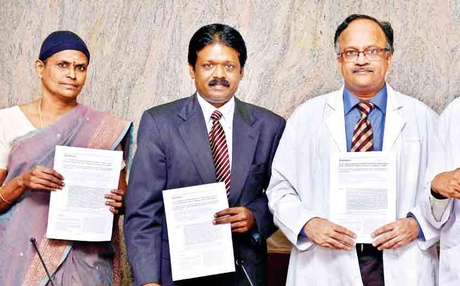
In an attempt to treat nerve issues related to gastrointestinal disorders, Madras Medical College and the Institute of Child Health (ICH), Egmore along with Nichi-In Centre for Regenerative Medicine, have for the first time in the country, conducted a study on stem cells that have a potential to treat the disease.
The doctors have also for the first time found a synthetic scaffold that can help in the optimal regeneration of the neurons after the cells are transplanted in the affected portion of the intestine.
The four-year study is restricted to finding a treatment for Hirschsprung’s Disease, a disorder of the abdomen, in which part or whole of the large intestine lacks the nerves which are needed for movement of the stool through the intestine. The disease, which one in 5,000 children have at birth, affects the activity of the large intestine. Due to the lack of nerves, the intestine doesn’t relax, thus creating an obstruction while passing stool.
Professor Dr V Senthilnathan said ICH receives about eight to 10 cases a month and about 120 cases a year. Unlike the current treatment option where pull through surgery is performed by pulling out the normal portion of the colon, which has the nerves, to the anus, cell-based therapies can be a potential solution to the disorder, as the surgery involves single to multiple stages. “By the age of three, the child would have undergone two or three surgeries,” the doctor said.
Doctors here collaborated with Japanese researchers to isolate and culture enteric neural precursor cells from biopsy samples that are taken from the gut of patients who were undergoing surgeries for the disease. These cells, along with a novel thermo-reversible gelation polymer scaffold, are grown, divided and multiplied in a laboratory, before they can be transplanted in the affected portion of the colon, in Hirschsprung’s Disease, along with the scaffold.
Once transplanted, the scaffold can help in optimal regeneration of neurons that have the capability to restore the function of the colon. “We take the cells from the area where the nerve is normal. These are grown and multiplied, and then transplanted to the affected area,” explained Dr J Krishnamohan, Professor of Paediatric surgery, Government Kasturba Gandhi Hospital.
Though several similar studies have been conducted in many countries and tested on animals, doctors here have for the first time found a scaffold that is purely synthetic as there are chances of the human body rejecting the conventional scaffold material.
“We have used Japanese laboratory to grow the cells. We will approach the ethics committee and based on their recommendation, we will proceed further. But if we need to get this therapy for public use, we need a laboratory on our own, which could cost `40 to 50 lakh,” Dr Senthilnathan said.
Dr J Krishnamohan said that phase one of the study was completed and that it could take another 10 years for it to be put to public use.
source: http://www.newindianexpress.com / The New Indian Express / Home> Cities> Chennai / by Express News Service – Chennai / November 13th, 2013